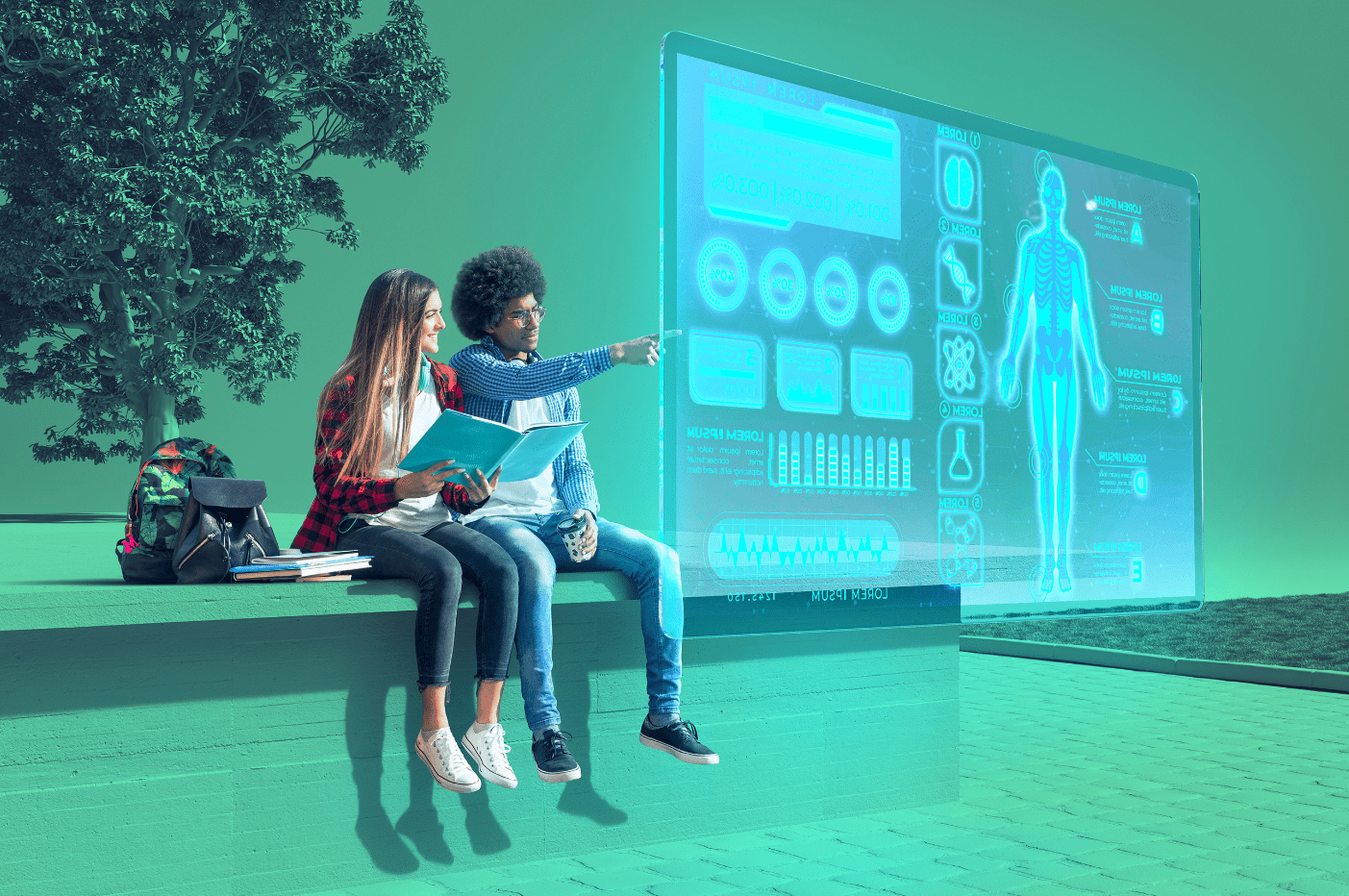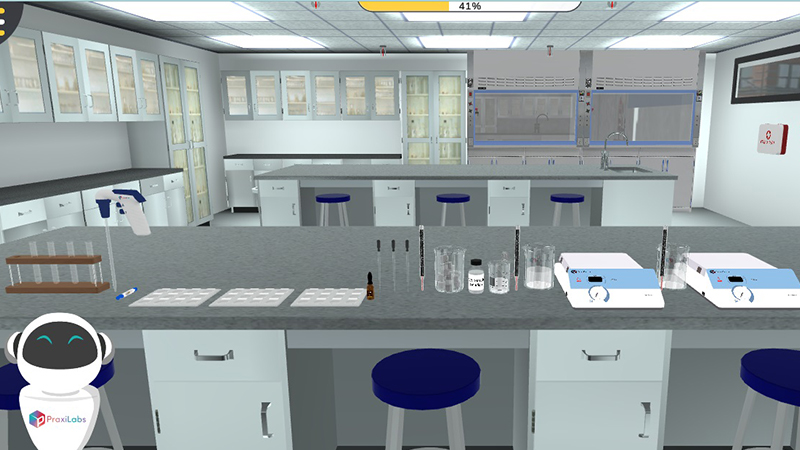Last Updated on June 1, 2025 by Muhamed Elmesery
In today’s world, student engagement in physiology simulations has become increasingly critical. Engaging students in these simulations can lead to enhanced learning experiences and deeper authentic understanding, ultimately improving their educational journey. This blog post will explore the significance of building student engagement in physiology simulations, and strategies for teaching physiological concepts during class time. We will also delve into PraxiLabs virtual lab simulations in physiology.

Table of Contents
Virtual Lab Simulations | New Approach to Building Student Engagement in Physiology
Virtual lab simulations have emerged as a groundbreaking approach to build student engagement in physiology. These simulations offer a dynamic and immersive learning experience that captivates students and deepens their understanding of complex physiological concepts. By leveraging virtual lab simulations, educators can revolutionize the way physiology is taught and empower students to actively participate in their own learning journey.
Enhancing Accessibility and Flexibility
Virtual lab simulations break down barriers, providing students with access to high-quality laboratory experiences regardless of their location. This accessibility fosters inclusivity and ensures that all students have the opportunity to engage in practical, hands-on learning, irrespective of their physical proximity to a traditional laboratory setting. Additionally, the flexibility of virtual lab simulations allows students to conduct experiments at their own pace, catering to diverse learning styles and schedules.
Facilitating Experiential Learning
The interactive nature of virtual lab simulations enables students to engage in experiential learning, where they can conduct their experiments, observe results, and draw conclusions in real time. This hands-on method not only enhances their understanding of physiology theoretical concepts but also cultivates problem-solving, critical thinking, and analytical skills which are essential for a career in physiology and related fields. By immersing students in realistic laboratory scenarios, virtual lab simulations bridge the gap between theory and practice, enhancing their learning outcomes and educational experience.
Empowering Active Exploration
Virtual lab simulations empower students to actively explore physiological concepts in a safe environment. They can conduct their physiological experiments, make observations, and analyze data without the constraints of time, resources, costs, or safety concerns. This active exploration enhances a sense of curiosity and discovery, encouraging students to delve into the science of physiology and develop a genuine passion for the subject.
![]()
Fostering Collaborative Learning
By incorporating virtual lab simulations into the physiology curriculum, educators can promote collaborative their students’ learning experiences. Students can work together in virtual labs environments, discussing findings, sharing insights and solving problems. This collaborative approach not only increases student engagement in online simulation learning but also mirrors real-world scientific research and teamwork, preparing students for professional environments where collaboration is critical.

Strategies for Teaching Physiological Concepts During Class Time
It’s important to focus on engaging students and facilitating their understanding of key principles when teaching physiological concepts during class time.
Here are some concepts and strategies related to physiology that can be incorporated into the classroom to enhance students’ engagement and learning experience:
Core Concepts Approach
Consider using a core concepts approach to teach physiology concepts, where the focus is on understanding fundamental principles and their interactions within the context of physiological systems.
Branches of Physiology
Let your students explore the various branches of physiology, such as systems physiology, cell physiology, evolutionary physiology, and defense physiology, to provide a comprehensive understanding of how different aspects of the body structure, function and respond to challenges.
Virtual Lab Simulations Experience
Consider incorporating immersive virtual lab simulation experiences to increase the learning of complex physiological concepts. This can help students explore and understand physiological processes, such as navigating through blood vessels, measuring blood pressure, counting red blood cells, and more.
Application to Real-Life Situations
Emphasize the application of physiological concepts to real-life situations and medical conditions, allowing students to deeply understand and connect theoretical knowledge to practical situations.
By integrating these strategies and concepts into the classroom, educators can create an engaging and enriching science learning environment for their students who are studying physiological concepts.
Study for Measuring Student Engagement and Using Science Virtual Simulations
A study at A.T. Still University School of Osteopathic Medicine in Arizona (ATSU-SOMA) investigated the utility of virtual patient simulations (VPS) for increasing medical student engagement.
The aims were to specifically investigate how and to what extent the VPS fosters student engagement, with a focus on dimensions such as interest, flow, relevance, and more. The study explored researcher observations, classroom photographs, feedback, and surveys to measure student engagement. The qualitative data were analyzed using a grounded theory method.
Researchers successfully introduced a new learning platform into the medical school curriculum. The data collected during this study were also used to improve new learning modules and techniques associated with implementing them in the classroom. The results of this study assert that virtual patient simulations foster engagement in terms of flow, relevance, and interest.
Learn Physiological Concepts with PraxiLabs Virtual Labs Simulations
PraxiLabs offers a revolutionary way for learning physiological concepts through our physiology virtual lab simulations. These simulations provide a 3D immersive, interactive, personalized, and adaptive learning experience, building student engagement anytime, anywhere.
The game-like simulations mimic real-world (physical) lab experiences, allowing students to practically apply class topics and gain a deeper understanding of physiological concepts and topics.
Praxilabs provide variety of 3D science experiments to enhance science learning.

Let’s take some examples of PraxiLabs’ virtual lab simulations in physiology:
Amylase Test
Amylase Test simulation aims to perform a qualitative detection of salivary amylase in saliva solution and understand the effect of temperature and pH value on the SA activity.
By the end of the experiment, students will be able to:
- Handle the required instruments and consumables in the present experiments.
- Determine the time at which Iodine solution color changes in the presence of SA under different conditions.
- Identify the optimum conditions for detecting SA activity.
Red Blood Cell Count Simulation
Red blood cell count simulation offers a practical and interactive way for students to learn about the significance of blood cell counts, their clinical implications, and the use of advanced technologies in analyzing and understanding blood-related conditions.
Transform Education with PraxiLabs Virtual Labs
PraxiLabs boasts a wide array of features, including 180+ STEM simulations, 20+ science branches, and 24/7 tech support, ensuring that educators and students have access to comprehensive resources and assistance. The platform’s ability to customize experiments in any language, provide full-on virtual laboratory training, and integrate with learning management systems (LMS) further enhances its use for educational institutions worldwide.
Now is your educational institution’s moment to power up your students’ inner scientists and open up a world of possibilities!
 PraxiLabs A virtual world of science
PraxiLabs A virtual world of science





